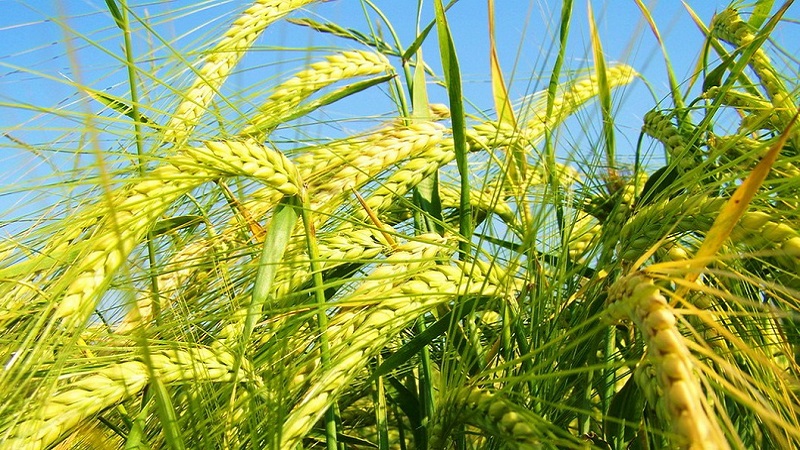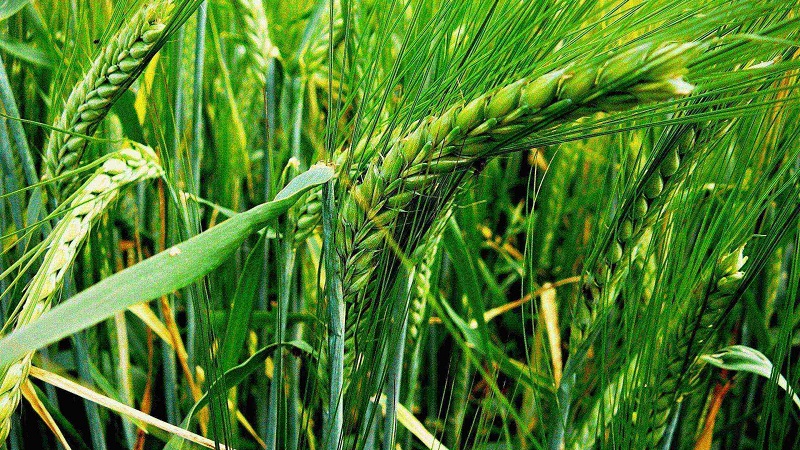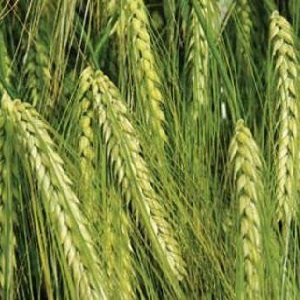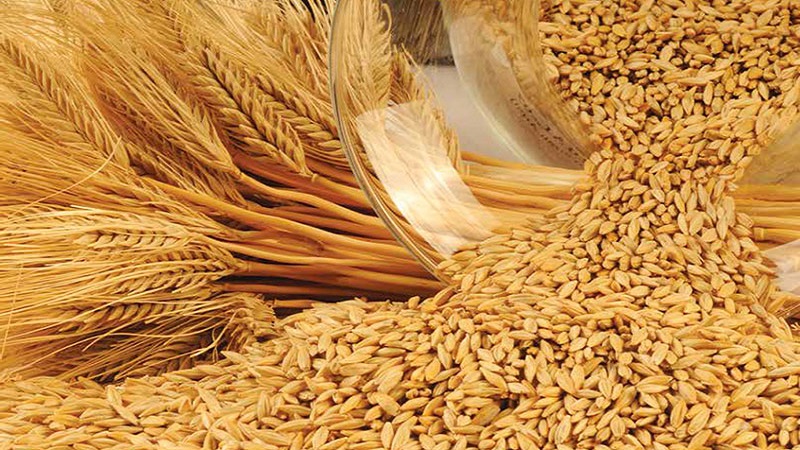What kind of plant is barley: description and characteristics
Barley is a genus of plants of the Myatlikov family, which was cultivated at least 10 thousand years ago. Grain has beneficial and nutritious properties. It is used in food for both humans and animals, it is used in brewing, cosmetology and alternative medicine.
Many varieties of barley are unpretentious, resistant to pests, diseases and adverse weather conditions. You will learn more about these and its other features below.
The content of the article
Biological features of barley
Among the various types of barley, one-, two- and perennial self-pollinating plants are found.... Common barley is a widespread cultivated grain. The rest of the species are wild or rarely grown.
Plants reach a height of 30-60 cm, cultivated varieties - up to 90-100 cm... Stems glabrous and straight with well-developed nodes. The leaves are flat, 30 cm long, 2-3 cm wide. The root system is fibrous, well developed. Spikes are four- or hexagonal, 10 cm or more in height, 1.5 cm in width. The cereal blooms in early summer, bears fruit by the end of August.

What does the grain look like and what inflorescence does the barley have? The grain is mostly light yellow, length - within 8-10 mm, width - 2-4 mm... The inflorescence of the cereal is a complex ear. The rod itself is strong, 3 spikelets sit on it. The outer flower scales are yellow, black, or orange.
Composition and useful properties
Barley has a rich chemical composition, see the table for details.
| Name | The amount of substance in 100 g of the product (from the daily value) |
| proteins | 10,96% |
| fats | 3,48% |
| carbohydrates | 39,44% |
| alimentary fiber | 72,5% |
| vitamin B1 | 28,8% |
| vitamin B2 | 10,3% |
| vitamin B6 | 19,8% |
| a nicotinic acid | 25,8% |
| pantothenic acid | 9,8% |
| magnesium | 35,4% |
| iron | 20,3% |
| selenium | 46,0% |
| phosphorus | 38,6% |
| potassium | 14,6% |
| copper | 51,5% |
Caloric content of 100 g of product is 288 kcal.

How it grows
It takes up to three months on average for an ear to ripen.... The favorable temperature for planting a plant is + 1 ... + 3 ° C, but the grain ripens only at + 20 ° C. The varieties growing at lower temperatures are intended for the northern and high mountain regions of Russia. In a comfortable environment, the grain reaches 8 mm in length.
By the way. Barley is cultivated in Russia, Belarus, Ukraine and beyond the Arctic Circle. In the wild, the cereal is found from Tibet to North Africa.
Types and varieties
Agronomists subdivide barley into these types:
- Spring - used to obtain barley and pearl barley, flour and coffee substitute. This type of grain is considered to be an early crop, therefore it is sown at certain times so as not to lose an impressive part of the harvest. Spring cereal is resistant to pests.
- Winter - drought-resistant, has a short growing season: ripens 10–12 days earlier than winter wheat. The culture has good fodder qualities, gives a high grain yield. Such barley is used for the manufacture of flour, cereals, but the bulk of the grown grain goes for fodder purposes. Disadvantage winter cereal - lack of resistance to cold: the plant dies at temperatures below -12 ° C.
Popular varieties
Most popular varieties such:
- Priazovsky - has a semi-erect bush and a cylindrical medium-sized ear. Mid-season: the growing season is 71–87 days. The variety is resistant to drought and various pests. It has a high nutritional value. Distributed throughout Russia.
- Helios - the bushes are erect, reach a height of 70–80 cm. The variety has high drought resistance, stable productivity in different latitudinal zones.From 1 hectare of planted seeds, an average of 8000 kg of cereals are harvested. Recommended for growing in the Central Black Earth Region.
- Mameluke - has a cylindrical long ear of straw-yellow color, elongated serrated spines. The variety was bred in the Krasnodar Territory by crossing Triumph and Tempo. Early maturing barley: ripens in 65–85 days. It is included in the list of varieties of valuable quality, has a high yield, tolerates drought well.
- Duncan - developed using nanotechnology in Canada in 2012. It is used both for the production of cereals and for livestock feed. The barley is 100 cm high and has 14 stems. The number of grains in an ear is more than 250 pieces. Canadian barley has been sown for 10 years in a row, while it does not lose its beneficial properties. The plant tolerates drought well, withstanding + 60 ° C, resistant to fungal diseases, acid rain and soil salinity. Duncan hates weeds.
 Vakula (photo on the right) - semi-erect bushes, reaching a length of 70–80 cm. The culture easily adapts to different types of soils, gives good germination. The average yield for the Central Black Earth Region is 33.7 c / ha. The growing season is 69–85 days. Grains store up to 13% protein. The variety is used mainly in brewing and livestock feeding.
Vakula (photo on the right) - semi-erect bushes, reaching a length of 70–80 cm. The culture easily adapts to different types of soils, gives good germination. The average yield for the Central Black Earth Region is 33.7 c / ha. The growing season is 69–85 days. Grains store up to 13% protein. The variety is used mainly in brewing and livestock feeding.- The ark - winter barley. Semi-upright bushes, short cylindrical ears. The variety ripens within 275 days. Productivity - 64 kg / ha. Resistant to shedding, lodging, moderately susceptible to drought. Grains contain 13.3% protein. Recommended for the North Caucasus region.
- Selena Star - has semi-spreading bushes and semi-erect cylindrical ears. Reaches 1 m in height. The variety is resistant to many diseases and pests, not prone to shedding. The ripening period is 285 days.
- Borisfen - bushes of medium height (94–100 cm), ears with a weak waxy bloom or without it. Productivity - 75 kg / ha. Grains are rich in protein. The variety has a strong immunity to diseases. Grain ripens in 288 days.
Take a note:
Beneficial features
The rich composition of barley makes it a valuable health food... The main properties of the cereal:
- activates the brain, strengthens the nervous system;
- improves metabolism;
- lowers blood cholesterol levels;
- gently and carefully cleanses the body of toxins and toxins;
- makes the skin supple and elastic;
- slows down the aging process;
- strengthens teeth, bones and nails;
- promotes weight loss, weight maintenance;
- with regular use, increases immunity, has a tonic effect;
- has a diuretic, expectorant and anti-inflammatory effect.
A decoction of cereal is used when inflammatory diseases of the gastrointestinal tract.

Application
The cereal is used for the manufacture of barley and pearl barley., each of which is rich in fiber, vitamins and minerals.
The plant contains a large amount of proteins and carbohydrates, so it is often used as a pet food. Barley is used in such industries:
- cosmetology - smoothes wrinkles, tightens and moisturizes the skin;
- folk medicine - for the treatment of gastrointestinal pathologies (gastritis, colitis, stomach and duodenal ulcers), for gynecological diseases, cough, sore throat, high temperature as an antipyretic agent;
- brewing - as one of the ingredients of an alcoholic beverage.
Dishes with the addition of barley or pearl barley have a special taste... Therefore, the cereal is added to soups and side dishes (especially in kindergartens, schools and hospitals).
Harm and contraindications
With improper processing, storage or boiling of grains, the product disrupts the digestive tract, can cause poisoning. For example, in a damp room, staphylococci and other pathogenic bacteria multiply on the plant.
Important! Cereal culture is contraindicated for use in case of its individual intolerance, in particular gluten (its content in barley is up to 2.3%).
Conclusion
Barley is a grain crop that is used in various industries: for the manufacture of cereals and flour, as feed for livestock, in cosmetology, folk medicine, and brewing. The rich chemical composition of the grains makes them useful and nutritious for humans.
Many varieties of barley are resistant to drought, heat, various pests and diseases. The cereal is unpretentious and hardy, the main thing when growing it is to periodically remove weeds and avoid exposure to low temperatures.